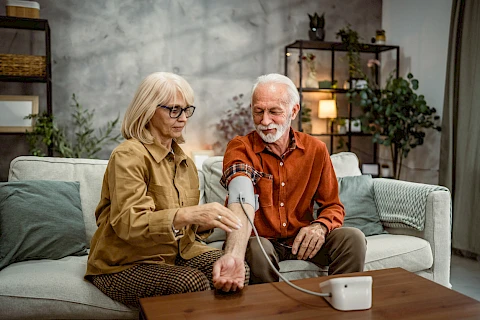
When our loved ones age, maintaining their health becomes increasingly important. One crucial aspect of this is monitoring blood pressure. High blood pressure is common among seniors and can lead to serious health problems if not managed properly. This is where caregivers play a vital role. When they understand how to monitor blood pressure effectively, caregivers can help manage and improve the health of seniors.
Basics of Blood Pressure
Blood pressure is measured using two numbers: systolic and diastolic. The systolic number is the top number and measures the pressure in the arteries when the heart beats. The diastolic number is the bottom number and measures the pressure in the arteries between beats. For seniors, normal blood pressure usually ranges around 120/80 mmHg. However, this can vary depending on individual health circumstances. You need to understand that various factors like age, diet, and medication can affect these numbers.
Proper Technique for Measuring Blood Pressure
For caregivers, taking an accurate blood pressure reading is key. Here's a step-by-step guide:
- Ensure the senior is seated comfortably, with their arm supported at heart level.
- Avoid caffeine, exercise, and smoking 30 minutes before the measurement.
- Use a well-maintained blood pressure monitor, preferably one that measures at the upper arm.
- Wrap the cuff snugly around the upper arm and turn on the monitor.
- Stay quiet during the measurement to avoid alterations in the reading.
- Take readings at the same time each day for consistency.
Using reliable equipment is vital to get accurate readings. Consistency also matters – taking readings regularly and from the same arm helps track changes over time.
Recording and Tracking Blood Pressure Readings
Keeping a detailed record of blood pressure readings is important. A simple notebook can suffice, or you may opt for using digital tools and apps designed for this purpose. Enter the reading, date, and time each day. Sharing these records with healthcare professionals helps in proper management and adjustment of treatments. With the right information, a doctor can provide invaluable advice.
Recognizing Concerning Blood Pressure Levels
Caregivers should be aware of what constitutes an abnormal reading. For seniors, a blood pressure higher than 140/90 mmHg could indicate hypertension, while lower than 90/60 mmHg might suggest hypotension. Watch for symptoms like dizziness, confusion, or chest pain, which could signal problematic blood pressure levels. If these occur, seek medical attention promptly. Keep in mind that lifestyle choices, like diet and physical activity, alongside medication, can significantly impact blood pressure.
Empowering Caregivers With Knowledge
Being informed is empowering for caregivers. The more you know about blood pressure, the better prepared you'll be to help. Numerous resources, such as books, online courses, and local workshops, can offer further education. Remember, you are a necessary part of managing your loved one's health. You can make a significant difference in maintaining their well-being by staying engaged and proactive.
Know Your Numbers, Protect Your Heart
Monitoring blood pressure is a key element of caring for seniors. From understanding what the numbers mean to knowing when to seek medical help, caregivers have a significant role in managing health. Stay vigilant, keep learning, and make sure to record and consult with healthcare professionals regularly.
For caregivers needing additional support, Senior Helpers Poway is here to assist you in Poway, San Diego, and Ramona. We offer professional assistance, ensuring your loved ones receive the care they need. Whether you require guidance on health management or more specialized services, don't hesitate to reach out.